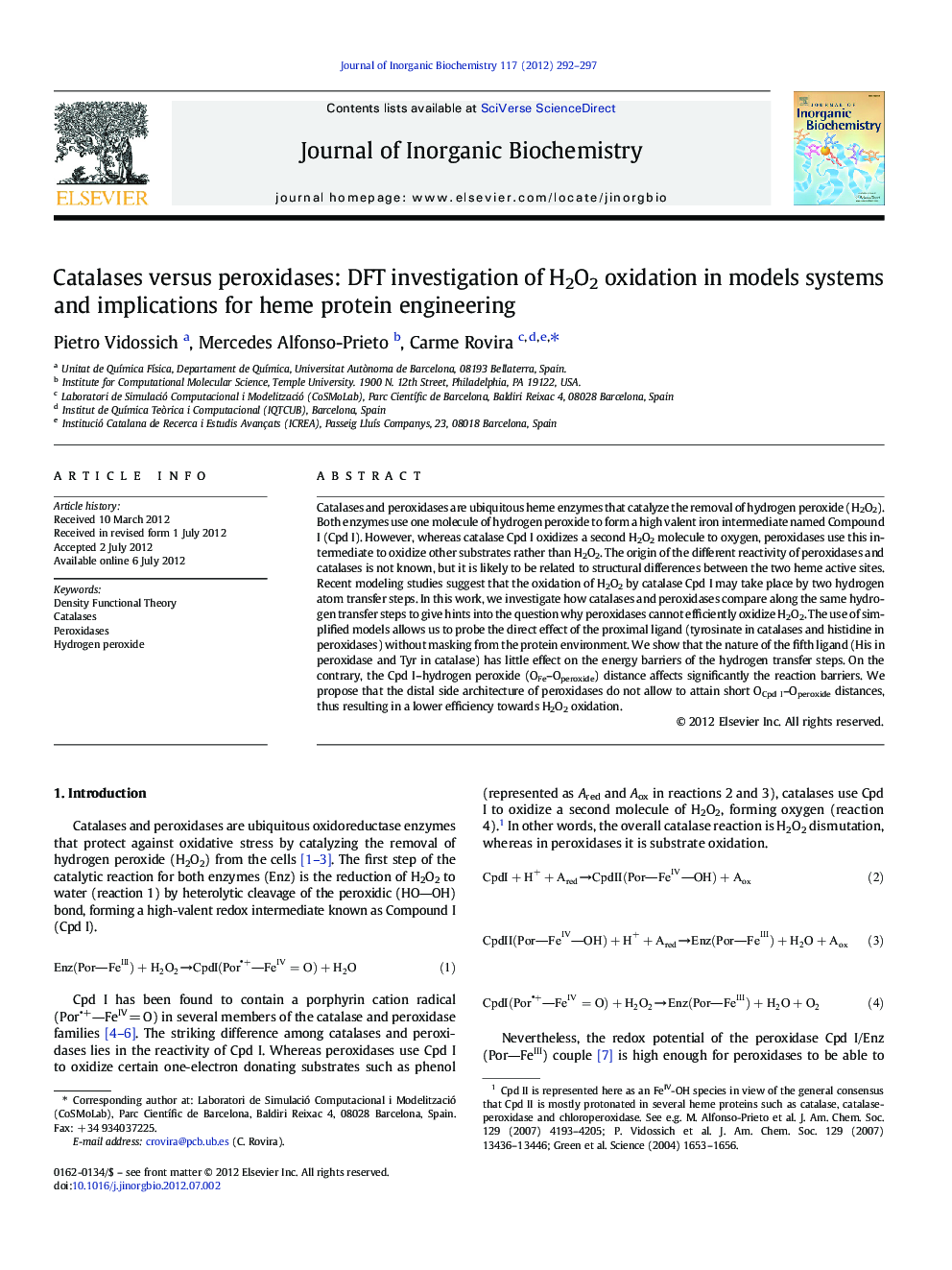| کد مقاله | کد نشریه | سال انتشار | مقاله انگلیسی | نسخه تمام متن |
|---|---|---|---|---|
| 1317731 | 1499470 | 2012 | 6 صفحه PDF | دانلود رایگان |

Catalases and peroxidases are ubiquitous heme enzymes that catalyze the removal of hydrogen peroxide (H2O2). Both enzymes use one molecule of hydrogen peroxide to form a high valent iron intermediate named Compound I (Cpd I). However, whereas catalase Cpd I oxidizes a second H2O2 molecule to oxygen, peroxidases use this intermediate to oxidize other substrates rather than H2O2. The origin of the different reactivity of peroxidases and catalases is not known, but it is likely to be related to structural differences between the two heme active sites. Recent modeling studies suggest that the oxidation of H2O2 by catalase Cpd I may take place by two hydrogen atom transfer steps. In this work, we investigate how catalases and peroxidases compare along the same hydrogen transfer steps to give hints into the question why peroxidases cannot efficiently oxidize H2O2. The use of simplified models allows us to probe the direct effect of the proximal ligand (tyrosinate in catalases and histidine in peroxidases) without masking from the protein environment. We show that the nature of the fifth ligand (His in peroxidase and Tyr in catalase) has little effect on the energy barriers of the hydrogen transfer steps. On the contrary, the Cpd I–hydrogen peroxide (OFe–Operoxide) distance affects significantly the reaction barriers. We propose that the distal side architecture of peroxidases do not allow to attain short OCpd I–Operoxide distances, thus resulting in a lower efficiency towards H2O2 oxidation.
Density Functional Theory calculations on H2O2 oxidation in catalase and peroxidase models show that the nature of the axial ligand (Lax) has little effect on the energy barriers of the hydrogen transfer steps, whereas the Cpd I-hydrogen peroxide (OFe–Operoxide) distance affects significantly the reaction energy barriers.Figure optionsDownload as PowerPoint slide
Journal: Journal of Inorganic Biochemistry - Volume 117, December 2012, Pages 292–297